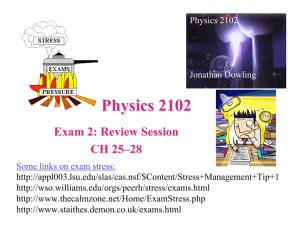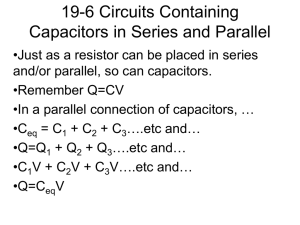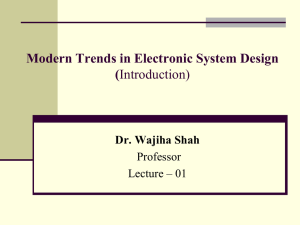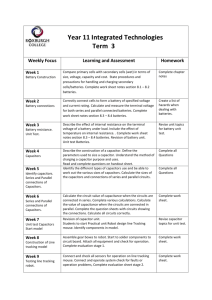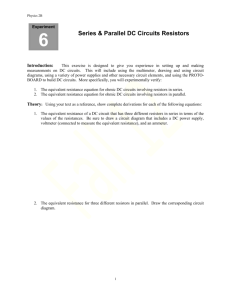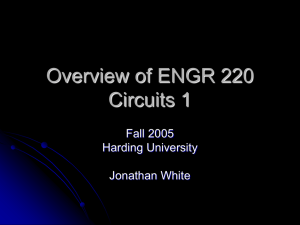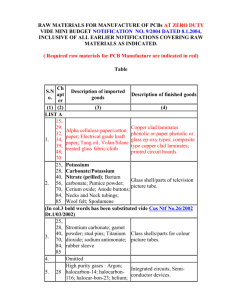Filling the Junk Box
advertisement
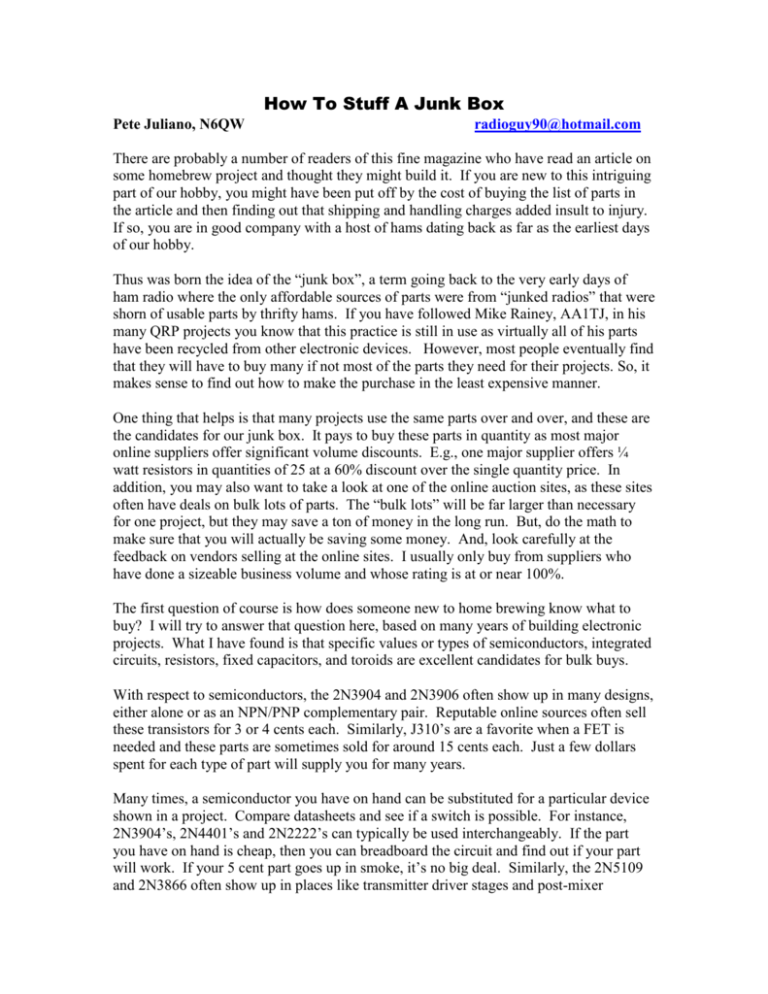
How To Stuff A Junk Box Pete Juliano, N6QW radioguy90@hotmail.com There are probably a number of readers of this fine magazine who have read an article on some homebrew project and thought they might build it. If you are new to this intriguing part of our hobby, you might have been put off by the cost of buying the list of parts in the article and then finding out that shipping and handling charges added insult to injury. If so, you are in good company with a host of hams dating back as far as the earliest days of our hobby. Thus was born the idea of the “junk box”, a term going back to the very early days of ham radio where the only affordable sources of parts were from “junked radios” that were shorn of usable parts by thrifty hams. If you have followed Mike Rainey, AA1TJ, in his many QRP projects you know that this practice is still in use as virtually all of his parts have been recycled from other electronic devices. However, most people eventually find that they will have to buy many if not most of the parts they need for their projects. So, it makes sense to find out how to make the purchase in the least expensive manner. One thing that helps is that many projects use the same parts over and over, and these are the candidates for our junk box. It pays to buy these parts in quantity as most major online suppliers offer significant volume discounts. E.g., one major supplier offers ¼ watt resistors in quantities of 25 at a 60% discount over the single quantity price. In addition, you may also want to take a look at one of the online auction sites, as these sites often have deals on bulk lots of parts. The “bulk lots” will be far larger than necessary for one project, but they may save a ton of money in the long run. But, do the math to make sure that you will actually be saving some money. And, look carefully at the feedback on vendors selling at the online sites. I usually only buy from suppliers who have done a sizeable business volume and whose rating is at or near 100%. The first question of course is how does someone new to home brewing know what to buy? I will try to answer that question here, based on many years of building electronic projects. What I have found is that specific values or types of semiconductors, integrated circuits, resistors, fixed capacitors, and toroids are excellent candidates for bulk buys. With respect to semiconductors, the 2N3904 and 2N3906 often show up in many designs, either alone or as an NPN/PNP complementary pair. Reputable online sources often sell these transistors for 3 or 4 cents each. Similarly, J310’s are a favorite when a FET is needed and these parts are sometimes sold for around 15 cents each. Just a few dollars spent for each type of part will supply you for many years. Many times, a semiconductor you have on hand can be substituted for a particular device shown in a project. Compare datasheets and see if a switch is possible. For instance, 2N3904’s, 2N4401’s and 2N2222’s can typically be used interchangeably. If the part you have on hand is cheap, then you can breadboard the circuit and find out if your part will work. If your 5 cent part goes up in smoke, it’s no big deal. Similarly, the 2N5109 and 2N3866 often show up in places like transmitter driver stages and post-mixer amplifiers. These have excellent specs but today cost over $2 a piece. I found that the 2N2219A available for $0.45 or the 2N3053 at $0.55 usually work in these circuits with no difference in performance. Critical specifications such as power dissipation are more than adequate. Try what you have in the junk box, as the worst that can happen is you will smoke a part. Resistors and capacitors are great targets for bulk buys. Many of the major suppliers such as Mouser and Jameco sell 100 pieces of the same value resistor for $2. For a $20 bill, that is 10 different values and 1000 parts! Many resistors are used over and over again such 100 Ohms, 1K and 10K and the same applies to capacitors such a 10NF and 100NF (For us old timers, those are .01 µfd and 0.1 µfd respectively.) Here $20 will get you about 100 pieces each --- maybe even more. The same applies for the common value electrolytic capacitors such as 100 µfd, 220 µfd, 50 µfd and 10µfd. For resistors and capacitors the actual value in general may not be too critical, so that substitution of values of a greater or lesser amount will probably work so long as the substituted value is within the range of say + or -10 to 15%. In the case of bypass or coupling capacitors, minimum values are more critical than maximum values. Here, you can probably substitute capacitors that are up to twice or three times as large as originally called for. Try it and see if it works. At times though, precision resistors (1% or even 0.1%) and capacitors may be required in circuits involving critical bias levels, tuned circuits, for timing applications and in feedback loops and in some filters that employ opamps. The phasing type receivers and transmitters use precision resistors and capacitors in phase shift networks and these must not be substituted. Typically these types of circuits will identify the need for precision components. In general, I purchase the carbon composition type resistors as they are stable and usually ¼ watt units are adequate for most solid state applications. Typically the tolerances are 5%. For capacitors that will be used in frequency determining circuits, I purchase COG (Ceramic on Glass and/or NPO which have neither a positive or negative temperature coefficient.) For bypass purposes, I purchase the XR7 or Z5U temperature coefficient capacitors. Electrolytic capacitors usually have 20% value tolerance and again, minimum value is usually much more important than maximum value in most circuits. Don’t forget that resistors and capacitors can be connected in series and parallel to achieve different values. Resistors simply add in series and capacitors add in parallel. However if one is placing two resistors in parallel, the lower resistance will have a greater fraction of the current flow. Make sure that neither resistance is exceeding its wattage or maximum current rating or you may instantly smoke a part. Similarly, make sure you are not exceeding voltage specifications on either capacitor in a parallel combination. Most inductors used in modern homebrew equipment are constructed on a toroidal core composed of ferrite or iron powder. The presence of the metal in the core has the effect of increasing the inductance value given the same number of turns over an air core winding. For the same number of turns and size, ferrite cores give a larger inductance value versus iron powder cores. The ferrite cores most frequently used are the FT37-43 and to a lesser extent the FT37-51. The FT37-51 has a lesser Al value, meaning more turns of wire for the same inductance. For applications such as band pass and low pass filters and other frequency selective circuits, iron powder types are the cores of choice and the most frequently used are the T37 and 50 in the #2 mix (Red Core), the T37- and T50 in the #6 mix (Yellow Core) and the T68-2 and T68-6. Amidon, the core supplier, has information on the Internet about the winding of the cores to achieve specific inductance values. In the past, Amidon also previously supplied a fold out reference pamphlet that had all the winding information, charts curves and even how many turns of a specific wire size would fit on a particular core. If the constructor can acquire one of those pamphlets, they are worth their weight in gold. So without further ado, here is a listing of parts that would enable having a rather complete “Junk Box”. Resistors: (all ¼ Watt): 1, 10, 50, 100, 220, 330, 470, 1K, 2.2K, 3.3K, 4.7K, 10K, 22K, 47K, 100K, and 1M ohms Capacitors (all 50 Volts.): Frequency Determining [(COG (Ceramic on Glass) or NPO, 10 values each]: 5PF, 10PF, 22PF, 33PF, 47PF, 68PF, 100PF, 150PF, 220PF, 330PF, 470PF Bypass (XR7): 1NF, 10NF, 100NF, 200NF, 470NF (10NF and 100NF are the most commonly used) Electrolytic: 1UFD, 3.3UFD, 4.7UFD, 10UFD, 47UFD, 100UFD, 220UFD, 470UFD and 1000UFD (Most commonly used; 10UFD, 100UFD, 220UFD) Inductors: Molded: 1 UHY, 2.2Uhy, 10Uhy, 15Uhy, 100Uhy Ferrite Cores: Amidon FT37-43 (most used) FT 37-51, FT50-43 Iron Powder Cores:T37-2, T37-6, T50-2, T50-6, T68-2, T68-6. Balun Cores: FBN type 43 & 51 Wire (for winding): Purchase Multi-color Enamel Magnet Wire (Amidon sells Red & Green) Size #26 (most frequently used), Single spools of #24 and #30 Transistors: 2N3904, 2N3906, 2N2222 & 2N2222(TO-18), 2N2219A, 2N3053, 2N3866, 2N5109, 2SC2166, IRF510 Zener Diodes: 5.1V, 8.1V, 10V, 33V Signal and Switching Diodes: 1N914, 1N4148, 1N270 Power and Reverse Voltage Protection Diodes: 1N4004 Voltage Regulators: 78L05, 7805, 78L08, 7810, 7812, LM317L, LM7905, LM7912 IC’s: NE555, LM741, LM386, SA602/612, MC1350, NE5532 and NE5534 Miscellaneous Parts: Double Balanced Mixers: SBL-1, TUF-1, ADE-1 (all Mini Circuits Labs) Sockets: 8, 14 and 16 Pin DIPs, TO-92 Sockets, TO-39 Sockets Heatsinks & Insulators: TO-220 Insulator kits, TO-220 Heat Sinks, TO-39 Heat Sinks
